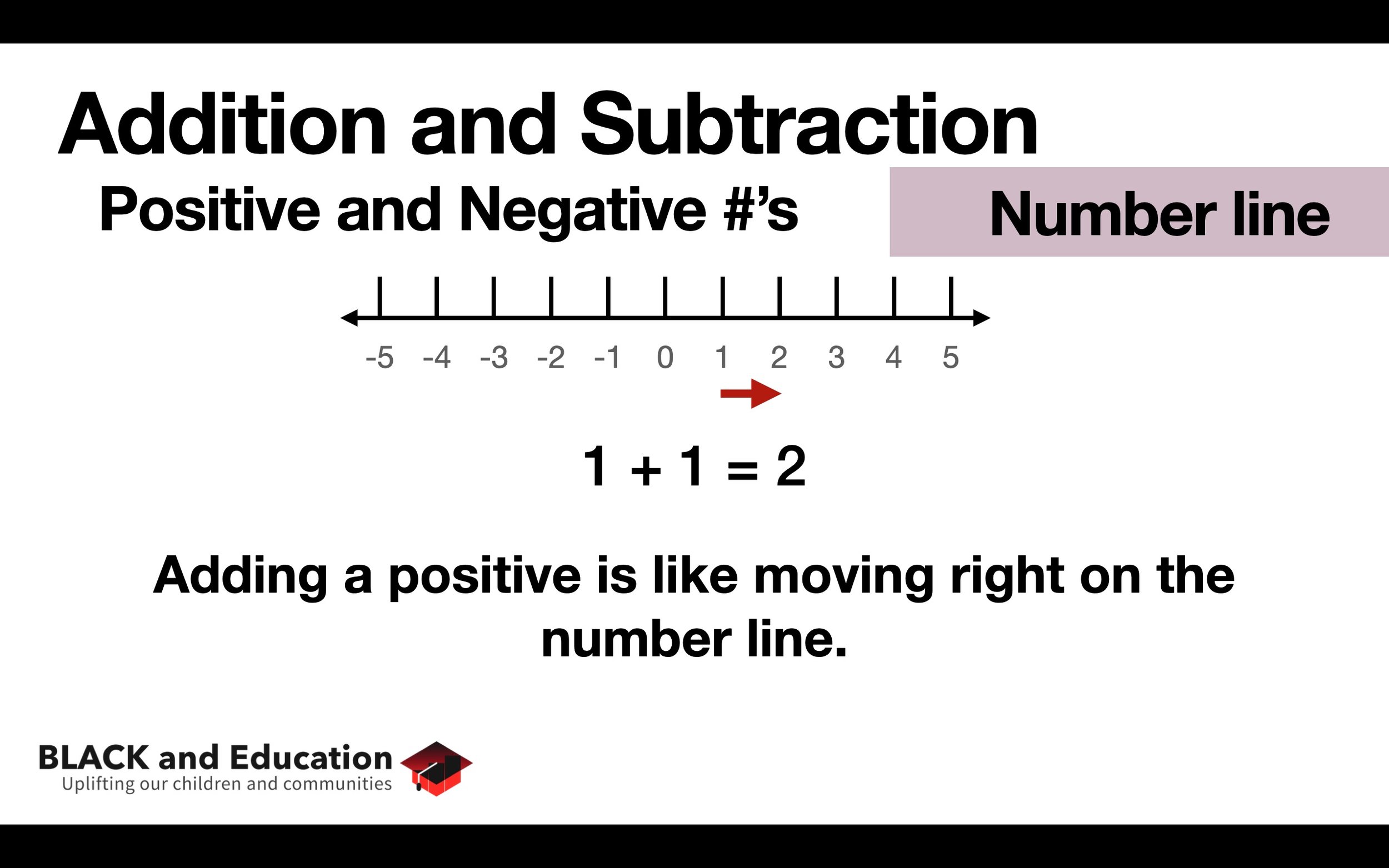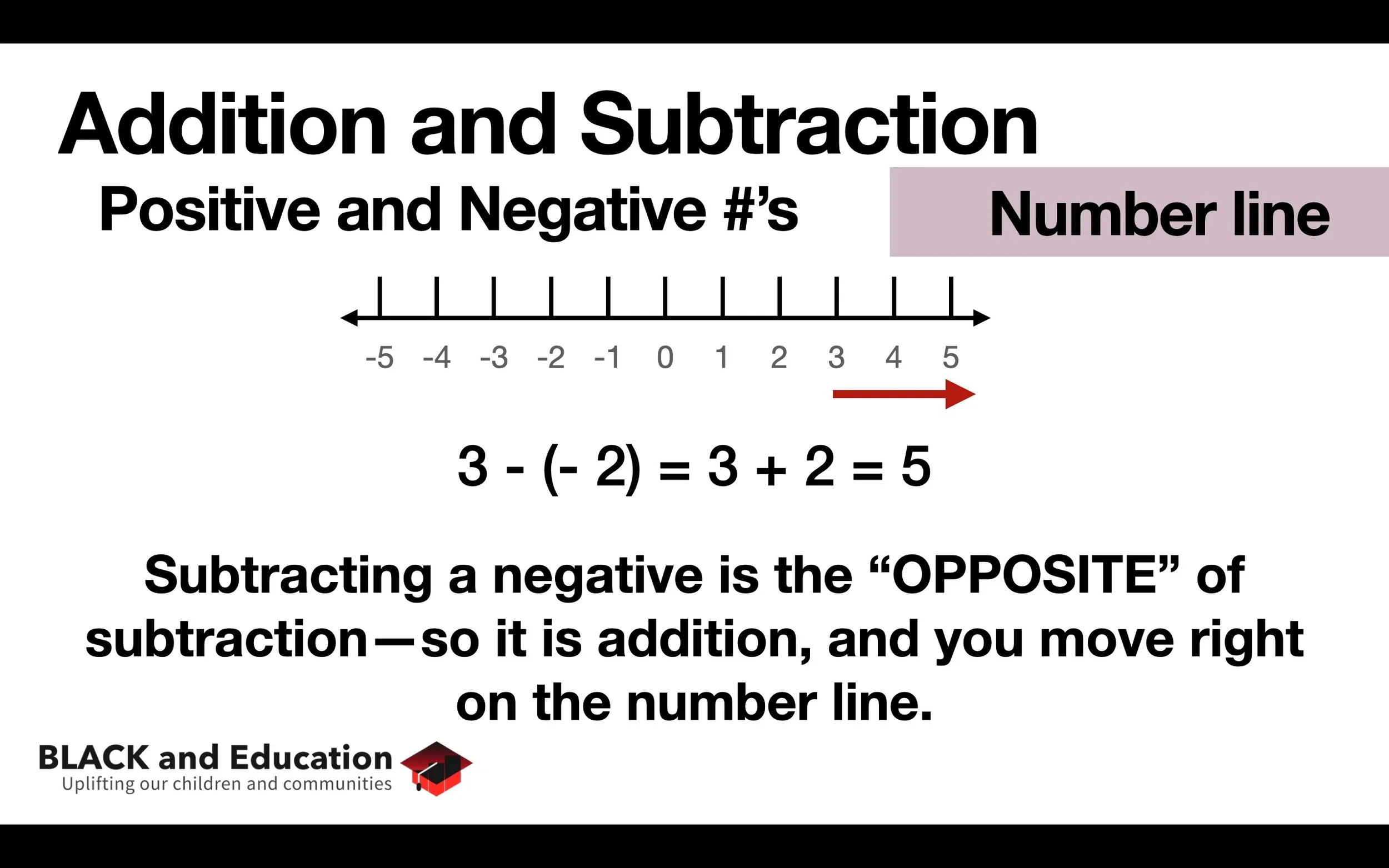Adding and Subtracting with Negative Numbers
Available on Amazon
When dealing with negative and positive numbers, it’s helpful to think of a number line. We will see number lines, and coordinate planes (a graphing system), a lot in math, so it’s a great idea to get familiar with them sooner, rather than later.
A number line represents positive numbers to the right of zero and negative numbers to the left of zero. In very simple terms, if you move right on the number line you are adding, if you move left, you are subtracting.
You simply start at the number you are dealing with and move left, or right, the appropriate numbers of spaces (almost like a board game, only it’s not!).
Adding a Positive
Addition is moving right on the number line.
So, simply adding 1 + 1 on the number line, means you start at one and move one space to the right. You will be at two…so 1 + 1 = 2.
Adding a Negative
Adding a negative is just like subtracting.
Adding a negative is just like subtraction—you move left on the number line. So, 0 + (-1) would mean you start at 0 and move 1 space to the left. You would be at -1.
0 + (-1) = -1
Subtracting a Positive
Subtraction moves left on the number line.
Subtraction, as we have mentioned, is moving left on the number line. If you started at -2 and subtracted 3 (you’re subtracting a positive 3), you would be at -5.
-2 - 3 = -5
Subtracting a Negative
Subtracting a negative is the opposite of subtraction, it’s addition.
When you subtract a negative, you are doing the OPPOSITE of subtraction, so you are adding. Subtracting a negative means to add. So, if I started at 3 and subtracted negative 2, I would be adding 2 and moving right on the number line. So, the answer would be 5.
3 - (-2) = 5
Summary
Addition is moving right on the number line.
Subtraction is moving left on the number line.
Adding a negative means you are subtracting and should move left.
Subtracting a negative, means you are doing the opposite of subtraction (you are adding)—you should move right on the number line.






